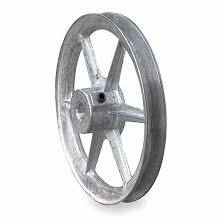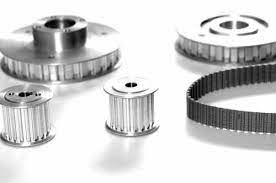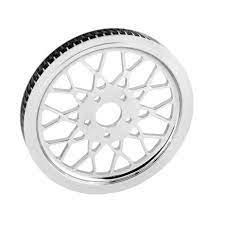Product Description
Factory high quality Aluminum alloy 5mm bore 2 flanges GT2 GT3 GT5 GT8 GT14 timing belt pulleys
1) Warranty: our timing pulley’s quality is very good and with ensurance within 1 year, when you receive the products and find quality problems, we promise you could return it back and free maintenance.
2) Drawings: please send you timing pulleys’ drawings to us to get the best quotation; If you have no drawings, then we could work out CAD drawings and the best quotation to you ASAP.
3) Sample: we accept 1 piece sample’s order, we could do samples until you’re satisfied.
4) Confidentiality agreetment: Strictly adherence to client confidentiality agreetment for timing pulleys.
| Product Description |
|
Product Name |
Timing Belt Pulley | |
| Teeth profile | Trapezoidal toothed | MXL, XXL, XL, L, H, XH, XXH |
| T-toothed | T2.5, T5, T10, T20 | |
| Arc toothed | HTD3M, HTD5M, HTD8M, HTD14M, HTD20M, Gt2, Gt3, Gt5 | |
| S-toothed | S2M, S3M, S4.5M, S5M, S8M, S14M | |
| Parabolic-toothed | P2M, P3M, P5M, P8M, P14M | |
| Y-toothed | G2M, G3M, G5M, Y8M | |
| Teeth Quantity | 10-150 teeth or customized | |
| Inner Bore | 2-200mm H7 precision or customized | |
| Belt width | 4mm, 6mm, 9mm, 10mm, 12mm, 15mm, 20mm, 25mm, 30mm, 40mm, 50mm, 1/4”, 5/16”, 3/8”, 1/2”, 3/4”, 1”, 1.5”, 2”or customized | |
| Accessories | We can provide the service of assembling setscrews, bearings, shafts or taper bush | |
| Surface treatment | Anodize,Black Oxide,Phosphate and Galvanization | |
| Drawing Format | Timing belt pulley cad drawing,timing belt pulley UG drawing,Timing belt Pulley Soliwork drawing,Timing Pulley PDF drawing | |
What is timing pulley?
Timing pulleys are specialized pulleys that have either teeth or pockets around the outside diameter of the pulley body. Timing teeth engage holes in the metal belt, while timing pockets engage drive lugs on a belt’s inner circumference. These teeth or pockets are used only for timing, not for power transmission.
How timing pulleys work?
The synchronous wheel transmission is composed of an endless belt with equal-spaced teeth on the inner peripheral surface and a pulley with corresponding teeth. During operation, the toothed teeth mesh with the tooth grooves of the pulley to transmit motion and power, which is integrated with the belt. A new type of belt drive with the advantages of transmission, chain drive and gear transmission.
What is gt2 timing pulley?
2mm pitch GT2 Pulley. The GT2 or 2GT Tooth Profile timing pulley prevails in the 3d printing hobby cause the Round tooth profile brings high precision of non-backlash, were known as today’s Reprap Pulley.
What is a timing pulley flange?
Timing pulley flanges are used to maintain belt contact with a timing pulley in power transmission applications.Timing pulley flanges are manufactured to fit timing pulleys of the same pitch and size. The dimensions of a pitch, including the mating flange, are specified by the number of grooves.
What are synchronous belts used for?
The trapezoidal tooth profile first used on synchronous belts is recognized as standard. Belts with this configuration are commonly used in machine tools, textile machinery, home appliances, business equipment, and as camshaft drives in engines.
Note:Please confirm you need teeth profile, teeth quantity, belt width, bore diameter, quantity and type (please refer below drawings) to get our the most complete CAD drawings and the best quotation.
Related Products
| Certification: | ISO |
|---|---|
| Pulley Sizes: | Type F |
| Manufacturing Process: | Forging |
| Material: | Iron |
| Surface Treatment: | Baking Paint |
| Application: | Chemical Industry, Grain Transport, Mining Transport, Power Plant |
| Samples: |
US$ 50/Piece
1 Piece(Min.Order) | |
|---|
| Customization: |
Available
| Customized Request |
|---|
Are there different types of drive pulleys, and how do they differ in their applications?
Yes, there are different types of drive pulleys available, each designed for specific applications based on factors such as power requirements, belt type, speed, and environmental conditions. These different types of drive pulleys offer variations in design, construction, and features to suit various industrial applications. Here’s an overview of some common types of drive pulleys and how they differ in their applications:
1. Flat Belt Pulleys:
Flat belt pulleys have a flat cylindrical surface and are typically used with flat belts. They are commonly found in applications where moderate power transmission is required, such as in light-duty machinery, conveyor systems, and agricultural equipment. Flat belt pulleys are known for their simplicity, cost-effectiveness, and ease of installation. They are available in various sizes and materials, including cast iron, steel, and aluminum.
2. V-Belt Pulleys:
V-belt pulleys have a V-shaped groove on their cylindrical surface and are designed to work with V-belts. The V-groove helps improve belt grip and prevents slippage, making them suitable for high-power transmission applications. V-belt pulleys are commonly used in automotive engines, industrial machinery, HVAC systems, and heavy-duty equipment. They are available in different configurations, including single-groove, multi-groove, and variable speed pulleys.
3. Timing Belt Pulleys:
Timing belt pulleys are designed to work with timing belts, also known as synchronous belts. These pulleys have teeth or grooves on their surface that mesh with corresponding teeth on the timing belt, providing precise and synchronous power transmission. Timing belt pulleys are commonly used in applications that require accurate positioning and synchronization of components, such as CNC machines, robotics, printing presses, and automotive engine systems.
4. Chain Drive Sprockets:
Chain drive sprockets are used in systems that utilize roller chains for power transmission. These pulleys have teeth or cogs that mesh with the links of the roller chain, enabling efficient power transfer. Chain drive sprockets are commonly used in heavy-duty applications, such as industrial machinery, conveyors, motorcycles, bicycles, and agricultural equipment. They are available in various configurations, including single-strand, double-strand, and multi-strand sprockets.
5. Cone Pulleys:
Cone pulleys have a tapered or conical shape and are used in applications that require variable speed drives. By adjusting the position of the belt on the conical surface, the effective pulley diameter changes, resulting in different speeds. Cone pulleys are commonly found in machine tools, drill presses, lathes, and other equipment where variable speed control is necessary.
6. Magnetic Pulleys:
Magnetic pulleys are designed with a magnetic surface to attract and hold ferrous materials. They are used in applications such as magnetic separators, material handling systems, recycling, and mining industries. Magnetic pulleys are effective in removing tramp iron or unwanted metal contaminants from conveyed materials.
These are just a few examples of the different types of drive pulleys available. Each type has its own specific design and features that make it suitable for particular applications based on factors like power transmission requirements, belt compatibility, speed control, and environmental conditions. It’s important to select the appropriate type of drive pulley based on the specific needs and operating conditions of the application to ensure optimal performance and longevity.
Can drive pulleys be customized for specific machinery and equipment?
Yes, drive pulleys can be customized to meet the specific requirements of machinery and equipment. Customization allows for the design and manufacturing of drive pulleys that are tailored to suit the unique needs of a particular application. Here are the key aspects of customizing drive pulleys for specific machinery and equipment:
1. Size and Dimension:
Custom drive pulleys can be manufactured in different sizes and dimensions to match the space constraints and installation requirements of the machinery or equipment. The diameter, width, and overall dimensions of the pulley can be adjusted to ensure proper fit and compatibility with the system. Custom sizing ensures that the drive pulley integrates seamlessly into the equipment without any interference or clearance issues.
2. Groove Profile:
The groove profile of the drive pulley is crucial for proper engagement with the belt or chain. Custom drive pulleys can be designed with specific groove profiles to accommodate various belt or chain types, including V-belts, flat belts, round belts, or timing belts. The groove dimensions, angles, and shapes can be customized to ensure optimal belt or chain tracking, reducing the risk of slippage and enhancing power transmission efficiency.
3. Material Selection:
Drive pulleys can be customized with different materials based on the specific requirements of the machinery or equipment. The material selection depends on factors such as load capacity, environmental conditions, and system dynamics. Common materials used for drive pulleys include steel, aluminum, cast iron, or engineered plastics. Customization allows for choosing the most suitable material that offers the desired strength, durability, and corrosion resistance for the application.
4. Shaft Configuration:
Custom drive pulleys can be designed to accommodate specific shaft configurations of the machinery or equipment. The pulley can be manufactured with a keyed bore, tapered bore, or other customized shaft attachment mechanisms to ensure a secure and precise connection. The shaft configuration customization ensures proper alignment and eliminates any potential for slippage or misalignment during operation.
5. Special Features:
Custom drive pulleys can incorporate special features or modifications to meet specific functional requirements. These features can include additional mounting holes, keyways, set screws, or other provisions for auxiliary devices or sensors. Special features can also be added to enhance the performance or functionality of the pulley, such as dynamic balancing for high-speed applications or noise reduction measures.
6. Coatings or Surface Treatments:
Depending on the application and operating conditions, custom drive pulleys can be coated or treated with specialized surface treatments. Coatings such as zinc plating, nickel plating, or powder coating can provide corrosion resistance and improve the aesthetic appearance of the pulley. Surface treatments like heat treatment or hardening can enhance the pulley’s durability, wear resistance, and load-carrying capacity.
7. Performance Optimization:
Custom drive pulleys can be designed and optimized to maximize the performance of the machinery or equipment. Factors such as speed, torque, power requirements, and system dynamics can be taken into account during the customization process. By carefully considering these factors, the drive pulley can be tailored to achieve optimal power transmission efficiency, minimize energy losses, and enhance overall system performance.
In summary, drive pulleys can be customized to suit the specific machinery and equipment requirements. Customization allows for adjusting the size, dimension, groove profile, material selection, shaft configuration, and incorporating special features or coatings. By customizing drive pulleys, manufacturers can ensure seamless integration, optimal performance, and reliable operation in various industrial applications.
How does the size and design of a drive pulley affect its performance?
The size and design of a drive pulley have a significant impact on its performance and the overall operation of a power transmission system. The size and design of a drive pulley influence various aspects such as speed, torque, power transfer efficiency, belt or chain life, and system reliability. Here are the key ways in which the size and design of a drive pulley affect its performance:
1. Speed and Torque:
The size of a drive pulley directly affects the speed and torque of the power transmission system. A larger pulley diameter results in higher belt or chain speed and lower torque output. Conversely, a smaller pulley diameter increases torque output but reduces belt or chain speed. By selecting the appropriate pulley size, the system can be optimized to achieve the desired speed and torque requirements for the driven components.
2. Mechanical Advantage:
The design and size ratio between the driving and driven pulleys determine the mechanical advantage of the power transmission system. By using different-sized pulleys or multiple pulley arrangements, the mechanical advantage can be increased or decreased. This affects the force or torque that can be transmitted from the driving source to the driven components. The mechanical advantage provided by the pulley design influences the system’s ability to handle loads or resistance efficiently.
3. Power Transfer Efficiency:
The design and size of a drive pulley impact the power transfer efficiency of the system. An appropriately sized pulley with the right groove profile facilitates proper belt or chain engagement, reducing slippage and power losses. A well-designed pulley minimizes friction and improves the grip between the pulley and the belt or chain, enhancing power transmission efficiency. Proper pulley design, such as V-grooves or toothed profiles, ensures efficient power transfer and reduces energy losses.
4. Belt or Chain Life:
The size and design of a drive pulley can significantly affect the life and durability of the belt or chain used in the power transmission system. Improper pulley design, such as sharp edges or inadequate groove profiles, can cause premature wear and damage to the belt or chain. Additionally, excessive belt tension resulting from an undersized pulley can lead to accelerated belt wear. Choosing the correct pulley size and design helps optimize belt or chain life, reducing maintenance costs and downtime.
5. Vibration and Noise:
The size and design of a drive pulley can influence the level of vibration and noise in the power transmission system. Improperly designed or unbalanced pulleys can introduce vibration, leading to increased wear and reduced system performance. The design of the pulley, such as the groove profile and the use of vibration-damping materials, can help minimize vibration and noise, ensuring smoother operation and improved system reliability.
6. Belt or Chain Tension and Alignment:
The size and design of a drive pulley affect belt or chain tension and alignment in the power transmission system. An undersized pulley can result in excessive belt or chain tension, leading to increased wear and reduced efficiency. Proper pulley design, including adequate groove width and profile, ensures optimal belt or chain engagement, minimizing tension and alignment issues. This promotes longer belt or chain life and reduces the risk of premature failure.
7. System Compactness and Space Constraints:
The size and design of a drive pulley also play a role in system compactness and space constraints. In applications where space is limited, smaller pulleys may be preferred to achieve the desired speed and torque. Conversely, larger pulleys may be required to accommodate higher power requirements or to optimize the mechanical advantage. The compactness and size of the pulley design should be considered to ensure proper installation and efficient use of available space.
In summary, the size and design of a drive pulley have a significant impact on its performance. They influence speed, torque, power transfer efficiency, belt or chain life, vibration, noise, tension, alignment, and system compactness. Careful consideration of these factors is essential in selecting the appropriate pulley size and design to optimize the performance, reliability, and efficiency of the power transmission system.
editor by CX
2023-11-27




